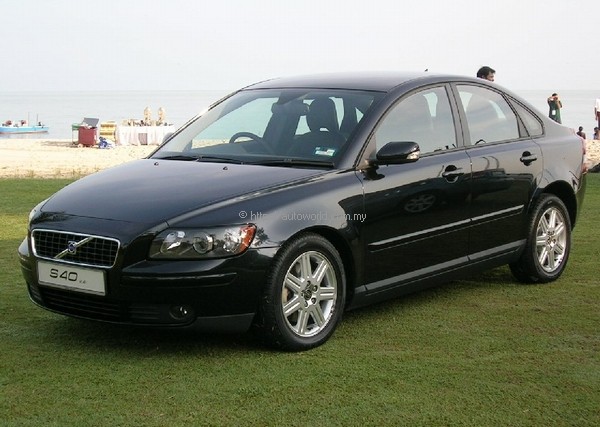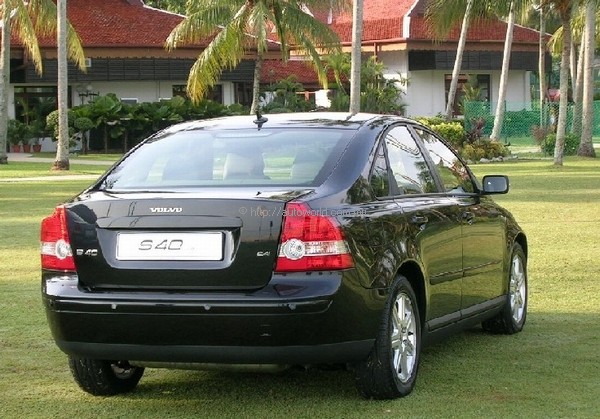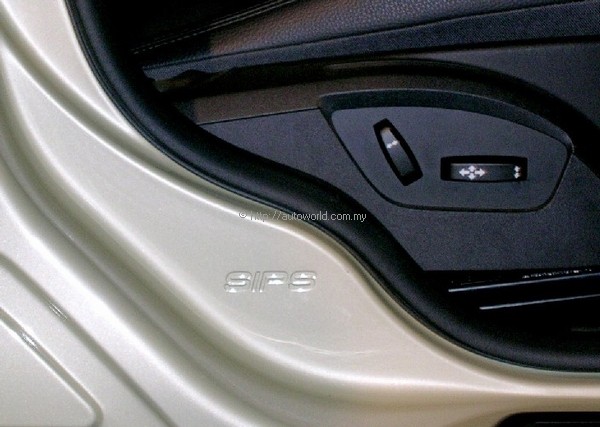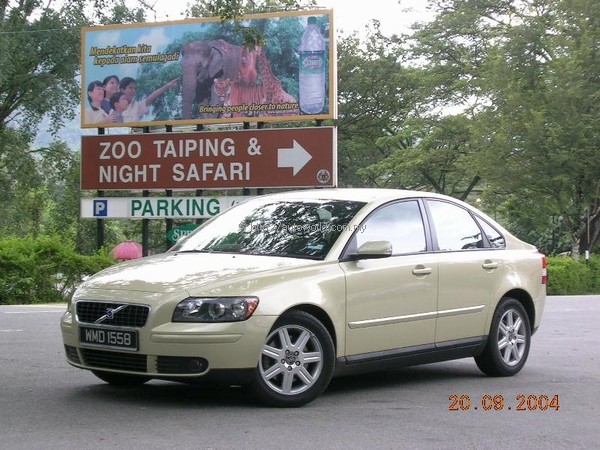Ivan Khong & The S40 – A Stunning Experience
Simply In-Volvo-ing S40
This is so un-characteristic of a Volvo, let alone an S40, I thought to myself as I hustle the car through a series of twisty bends. There is actually some sort of tactile feedback through the steering wheel as the S40 weaves, bobs and grips through the tight, undulating road towards Batu Ferringhi, Penang.
Okay, okay, lets not go too far here, this is after all, a Volvo. Safety is assured, as sure as it is etched in granite, but ride and handling? Well, be prepared to be amazed behind the wheel.
Since 1999, Volvo has been part of the Ford Motor empire, and the new S40 shares the same ‘C1’ platform with the Mazda3 and the soon to be launched 2nd generation Ford Focus. This does not mean it is a Mazda or a Ford under the sleek new skin, rather Volvo has taken the best characteristics of the legendary Ford Focus chassis, and added its expertise and knowledge in safety dynamics, both active and passive, to create a car that is uniquely a Volvo.
Exterior Styling
From the outside, the new Volvo S40 is an evolution of Volvo’s modern design, or so I am told from reading the press information booklet. There is no mistaking it for any other than a Volvo, that is for sure, but it is a refreshing interpretation of what a youthful Volvo should look like. The bonnet is short, with a pronounced cab-forward profile, with the characteristic broad shoulders and a tapered rear, giving it an athletic stance. The new car is shorter, but is wider and taller than the outgoing model. The track and wheelbase have been extended, in effect putting a wheel at each corner. This contributes to the sporty appearance and gives the car the handling to match.
Interior Styling
The most distinctive feature of the new S40 is the unique super slim free floating center console with a real aluminum metal surface, that elegantly links the tunnel console with the instrument panel. This is a first for the car industry, with inspiration drawn from classic Scandinavian design with its clean shape and open surfaces, airiness, an effective blend of form and function.
The main system functions are regulated via the four large rotary controls, with the top two rotary dials for the audio system with a radio and an in-dash 6 CD changer stack, while the lower two rotary dials control the climate control system, with individual temperature settings for the front passengers.
The rear seat folds and splits into two sections and the backrests fold down, and it is possible to have a load floor that is entirely flat for your furniture shopping in IKEA.
Ride & Handling
The body of the all-new S40 is 68 percent stiffer than the outgoing model. This not only makes it stronger in the event of a crash, but also contributes to stable, predictable and consistent behavior on the road. The suspension is a tad firm for my liking, with McPherson type springs and struts for the front, and the famed ‘Control Blade’ technology from the legendary handling Focus. The rear wheels are designed to give a little amount of wheel toe-in to enhance stability. This equips the new S40 for an exciting drive, and with the help of ABS, EBA (Emergency Brake Assistance) and STC (Stability and Traction Control) switched ON, it even helps the most ham-fisted driver to stay on the blacktop and out of making a hole in the scenery.
Power & Transmission
The heart of the car is the re-designed all-new 2.4-litre, 5-cylinder petrol engine, which is 200mm shorter and 25mm slimmer, which produces 170bhp @ 6000rpm and maximum torque of 230Nm @ 4400rpm, giving the car a respectable zero to century dash time of 8.9sec. With the 5-speed Geartronic transmission, it allows spirited manual gear changes to be accomplished when needed.
Safety
Being a Volvo, safety in the S40 is always a primary concern is intrinsic in the marquee. It is also an expectation of Volvo buyers that the Volvo they buy have the best active and passive safety features in its class. In the Volvo S40, safety takes precedence over form. This can be seen by the design elements that are prevalent in the styling of the overall car.
To maintain the legendary safety heritage of a Volvo, four different grades of steel are used in the design and manufacture of the Volvo S40. Besides the conventional bodywork steel, High Strength Steel, Extra High Strength Steel and Ultra High Strength Steel are deployed to the maximum to absorb as much of the incoming kinetic energy as possible. The frontal body structure of the Volvo S40 is divided into several zones, each with a different task in the deformation process in case of a collision. The outer zones are responsible for most of the absorption of the collision forces, and the closer the force gets to the passenger compartment, the more rigid the construction, to act as a sort of a brake for the deformation and keep the passenger cabin intact.
The engine and location of the battery and other components have been engineered to collapse in a pre-destined manner in the event of a frontal collision. Two steel cross members prevent the engine from intruding into the passenger compartment, by absorbing the kinetic forces and breaking away to direct the engine to slide under the vehicle. The paramount aim is the safety of the passengers.
Volvo’s lead in Side Impact Protection System (SIPS), first seen in the S80, can also be found in the design of the S40 vehicle’s safety. This is the only car in its segment to boast an additional crumple zone in the middle of the car, specifically, under the cup holders, near the handbrake lever. As part of SIPS, there are longitudinal members installed under the front seats that help keep the integrity of the seat and transfer energy from a side collision impact. This impact is transferred to the said crash box, under the cup holders, which deforms to absorb the crash energy. This is a world’s first in terms of passenger safety and works to supplement the side impact airbags and inflatable curtains to reduce passenger injuries resulting from side impact.
This is also the reason why the interior driver and passenger door pockets are oddly designed. There is hardly any space for anything besides paper maps, and this is because SIPS (Side Impact Protection System), requires the incorporation of a wide side impact load bearing structure from the door to the B pillar doorsill.
The Volvo S40 has also been designed to help provide the highest level of occupant protection in a rear end collision. Volvo’s system for avoiding neck injuries – WHIPS (Whiplash Protection System) – is one of the most effective on the market. In the event of a severe impact from the rear, the seat backrest and head restraint accompany the movements of the seat’s occupant body.
Driving it
The person who walks into the showroom and spends the next 15 minutes looking and sitting in the Volvo S40, checking out the shallow cup holders and making a judgment without actually driving it, will miss the whole point of the S40. Volvo bills this car as a Sports Saloon, and only by driving it will one begin to understand why it is defined as one. Steering is sharp. Handling is foolproof. Power delivery is smooth, and there is ample torque on hand for overtaking maneuvers. Attacking corners is now a joy, with precision, and if the bend tightens up, just apply more steering, and voila, the car tacks faithfully through it, even goading you, is that all you have? Engine sound is sonorous, with the 5 cylinder engine offbeat note, smooth all the way to the redline. Brakes are a tad sensitive, with too much assistance for my liking. Ride is a little harsh too. But all these minor niggles do not detract from the fact that the S40 now can wear the Sports Saloon label proudly.




























